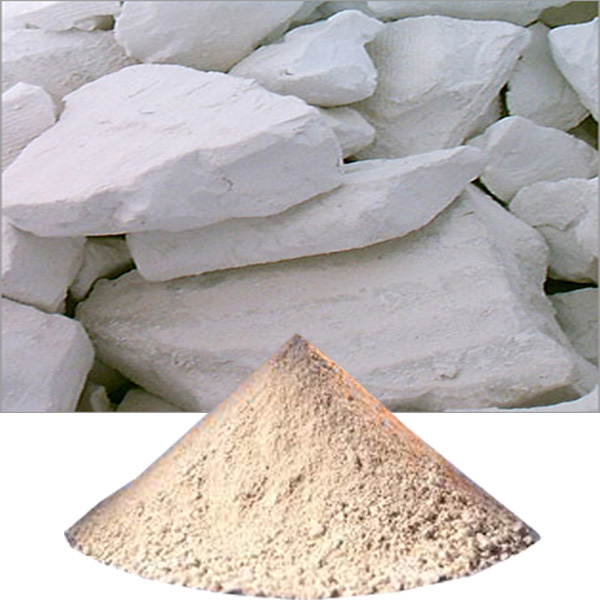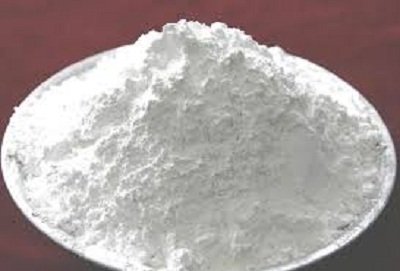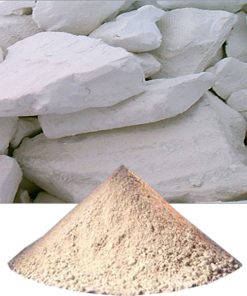Kaolin
In the production of fertilizers, kaolines are used as fillers and coatings, which are very important in preserving and improving fertilizer quality. – In other areas, kaolin is used as raw material for producing white cement, coated substances in construction, raw materials in aluminum and alum production …
Kaolin is widely used in many industrial fields such as ceramic industry, paper, paint, rubber, glass fiber, plastic, construction materials, refractory bricks, as a catalyst for oil refining technology. … Thanks to its ability to absorb not only fats and proteins, but also has the ability to absorb both viruses and bacteria, therefore, kaolinin is used in both medical and pharmaceutical fields. , cosmetics…[]. – Paper manufacturing industry: In the paper industry, kaolin is used as a filler to give paper a smoother surface, increase the tightness, reduce the optical penetration and increase ink penetration to the best level. Ordinary paper contains 20% kaolin, which contains up to 40%. Typically, a ton of paper requires 250-300 kg of kaolin. Kaolin quality used for paper making is determined by the whiteness, dispersion and uniformity of the grain groups. – Pottery production industry: porcelain industry, civil ceramics, fine arts porcelain, laboratory tools, insulating porcelain, sanitary wares, etc. all use the main material of kaolin; Adhesive material is flexible fire-resistant clay, white. Quality of kaolines requires very high and must control color oxides (Fe2O3 and TiO2). Fe2O3 content must not exceed 0.4-1.5%; TiO2 does not exceed 0.4-1.4%; CaO does not exceed 0.8% and SO3 does not exceed 0.4%. – Production of refractory materials: In the production of refractory materials, kaolin is used to produce refractory bricks, semi-acid bricks and other refractory materials. In the black metallurgy industry, refractory bricks made of kaolin are mainly used for lining blast furnaces, blast furnace, hot wind furnace. Other industries need less volume refractory bricks, mainly for lining incinerators, boilers in color metallurgy and chemical industry, in refineries, in the glass and porcelain industries, at home. cement machines and lime kilns. – Fabrication of fiberglass: another area also uses rapidly increasing kaolin which is used as raw material for glass fiber production. The composition of kaolin contains both silica and alumina, which are in the composition of glass fibers. Kaolin is used simultaneously with a small amount of iron and titanium. The cause of increasing demand for kaolin use in this area is due to the limitation when using materials into asbestos, a substance harmful to health. Fields of fillers: kaolin is widely used in the field of paper fillers, plastic, rubber, flavoring, … Kaolin has the effect of increasing the solidity, elasticity, insulation, durability of rubber, Increasing hardness and reducing production costs of plastics such as PE, PP, PVC … In the production of artificial leather (imitation leather), kaolin works to increase durability and elasticity. – In soap production: kaolin has a curing effect when producing and absorbing grease when used. The soap production sector requires kaolines with a grain content of 0.053 mm larger than 90%; no sand, no sediment before 8 hours, the content of Fe2O3 ≤ 2 – 3%, TiO2 ≤ 1%; exchangeable base materials ,8 0.8 – 2% and carbonate ≤ 15-20%. – In the production of pesticides: use kaolin with great diffusion, good adhesion, chemical inertia, low iron compound, grain size of 22 m from 40 to 75%. In synthesizing zeolites: kaolin is the main raw material for synthesizing zeolites, which are widely used in industry as adsorption, as catalysts …
In the production of fertilizers, kaolines are used as fillers and coatings, which are very important in preserving and improving fertilizer quality. – In other areas, kaolin is used as raw material for producing white cement, coated substances in construction, raw materials in aluminum and alum production …
Show reviews in all languages (3)






 Tiếng Việt
Tiếng Việt
Reviews
There are no reviews yet.